Vietnam, Myanmar, Indonesia, Bangladesh, India, which country is strong in garment investment and fa
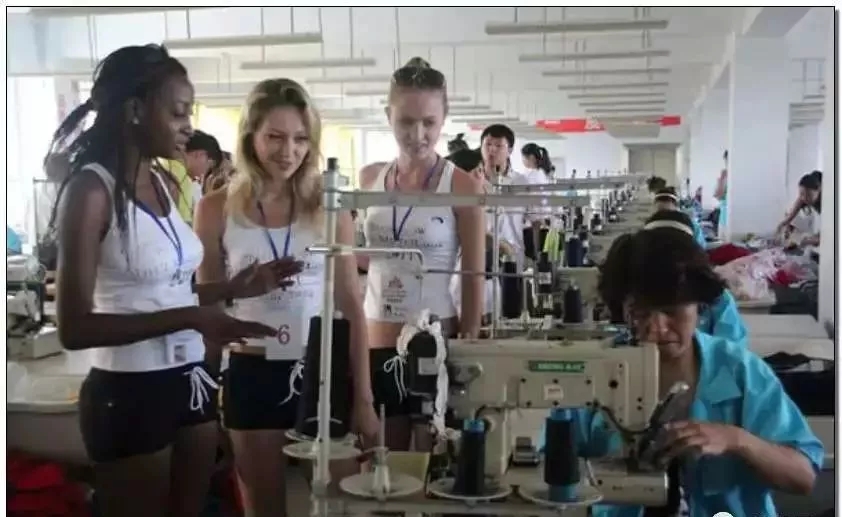
This year is the 70th anniversary of the founding of the new China, China's textile industry has established the most complete modern manufacturing system in the world. Today, China's textile enterprises respond to the national "One Belt, One Road" initiative in all aspects, to open a global layout.
According to the Ministry of Commerce statistics, from 2003 to 2018, China's textile industry foreign direct investment accumulated 9.796 billion U.S. dollars, with an average annual growth rate of 15.6%, accounting for 5.2% of the total accumulated foreign direct investment in the manufacturing industry. Among the countries along the route, China and the ASEAN region have the best performance in terms of cooperation dynamics, and their share in China's outward FDI and import and export trade has been increasing. ASEAN accounts for more than 80% of China's outward foreign direct investment. ASEAN is also China's largest export destination and largest source of imports along the Belt and Road, accounting for more than 30% of the total trade of countries along the route.

Recently, China Chamber of Commerce for Import and Export of Textiles held the 7th "China and Asia Textile International Forum" 2019 in Shanghai. At the meeting, Myanmar Garment Manufacturers Association, Vietnam Cotton and Textile Association, Bangladesh Garment Manufacturers and Exporters Association, India Textile Association, the person in charge of the recent Asian investment and policy direction to share exchanges. The following is an excerpt to share with colleagues in the textile and garment foreign trade industry.
Myanmar

Khin Maung Aye, Executive Director, Myanmar Garment Manufacturers Association
Workforce: Myanmar currently has a shortage of skilled workers, especially in the garment industry. The government has policies in place to help the industry and investors recruit the right staff or train skilled workers. The Ministry of Labor has introduced a decree on in-house training for the industry for five years, but the results have been less than satisfactory. Positive adjustments are now being made, such as reducing the percentage of costs borne by companies. The government has also now opened a number of training schools, piloted in five regions, to train workers in a targeted manner to improve their vocational skills and efficiency. And, advanced technology and semi-automatic machinery such as equipment can greatly increase productivity and reduce reliance on labor, as some factories already in operation can amply attest.
Logistics: Domestic transport is mainly by truck, which is less expensive; sea transport is more expensive; rail transport covers the whole country, and the railroad will be connected to China's railroad network, and the final feasibility assessment is being done now. However, Myanmar also enjoys the preferential treatment of zero tariff for exports to the EU and other regions, so exporting to the EU through Myanmar will be a major advantage, and can further enhance the procurement in Myanmar.

Vietnam
Nguyen Van Tuan, Chairman of Vietnam Cotton Spinners Association
Policy direction: The Vietnamese government wants the country's industry to start from the textile and garment industry, and through the practice of the past 20 years, it has proved that the policy meets the development needs of Vietnam. Now the development of Vietnam's textile industry has made great progress and has become the number one industry, absorbing more than 3 million people in employment and with a turnover of more than 40 billion dollars. The government hopes to continue to strengthen and promote the sustainable development of this sector to improve the country's economic strength and people's living standards.
Key areas of investment: fabric and dyeing. Currently, Vietnam's textile and garment industry is 75% CMT (feedstock processing) due to the inability of self-sufficiency of fabrics. The government hopes to further develop fabric production and promote the industry to upgrade from CMT to OEM and ODM. Vietnam is currently very dependent on fabric imports from China, and the government wants to adjust and change this.
Vietnam's northern province of Nam Dinh has a good foundation for the textile and garment industry and a well-developed printing and dyeing industry. The government intends to make the province a garment production center in northern Vietnam by setting up two industrial parks, one is already full and the other 2,100 hectares is still available for investment, where 3 billion meters of fabrics are expected to be produced.
Labor: With the rapid development of various industries, many industries in Vietnam are experiencing labor shortage. Other industries, such as the electronics industry, are also competing with the textile and garment industry for labor. There is also an imbalance in the distribution of the textile and garment industry in Vietnam. When Vietnam was first opened for investment, many investors chose the south over the north because the south was more open and had a better environment. But over time a lot of resources, such as human resources, were consumed, so it is true that in the south there is now also a shortage of resources and not enough labor, and not much infrastructure support. Therefore, in the past decade, the Vietnamese government has made great efforts to build up northern Vietnam, investing in infrastructure such as electricity, roads and airports. Now the conditions in the north may be better than those in the south. Investors may want to consider investing in the north, where there are better policies and more manpower. This may be a short-term response. In the long term, the government also encourages investors to come for vocational training, and the government will provide financial support such as government funds.

Bangladesh

Faruque Hassan, Vice President of Bangladesh Garment Manufacturers and Exporters Association
Industry overview: in 2016 and 2017, Bangladesh textile and garment industry had negative or no growth for consecutive years. in 2018, due to the trade friction between the US and China, Bangladesh benefited from it and achieved a 40% growth. Exports of apparel were $33 billion. Bangladesh is currently the second largest apparel exporter in the world, but the export strength of yarn and fabric needs to be improved.
Investment focus areas: Bangladesh does not have a mature chemical industry as support, and it is difficult to produce man-made fibers. The government hopes to have more investment in factories producing man-made fibers.
Environmental protection: Bangladesh textile and garment industry is concerned about environmental protection and hopes to achieve sustainable development of the industry. There are 83 green factories in Bangladesh and only 40 or so in China. Seven of the top 10 performing factories in the world have invested in Bangladesh. European buyers favor Bangladesh more than American buyers.
Labor force: Bangladesh is rich in human resources and is still in the demographic dividend period, with 72% of the population under 40 years old and 64% of the population under 30 years old. However, there is a lack of skilled workers and low production efficiency. The government has opened a fashion and textile university to give more people the opportunity to receive training in professional skills and fashion.

India

Arvind Sinha, Honorary President of Indian Textile Association
Policy Direction: India is not only an important textile and apparel exporter, but also a very important consumer market. India is also facing the problem of labor shortage, especially skilled workers, but the government attaches great importance to the training of labor force. India's infrastructure development is improving, with more than 40 kilometers of new roads being built every day. The government also pays full attention to the textile and apparel industry, and can enjoy tax breaks, lower interest rates on loans, and other incentives.

The textile industry is the pioneer industry for China to actively promote the construction of "One Belt and One Road", and it is also the preferred livelihood industry for countries and regions along the "One Belt and One Road" to promote industrialization, create national wealth and provide a large number of jobs. ASEAN is an important partner of "One Belt and One Road", and is also a key region for China's international textile capacity cooperation. Due to the deep historical and cultural ties between China and ASEAN, the geographical location and convenience of transportation make it easy for ASEAN countries to achieve natural industrial convergence with China.
In recent years, many domestic textile enterprises have invested and set up factories in ASEAN countries, thus promoting the international development of China's textile industry as well as strengthening the landing and implementation of international production capacity cooperation projects in the textile industry. According to statistics, in 2017, China's textile and garment industry invested US$655 million in ASEAN.
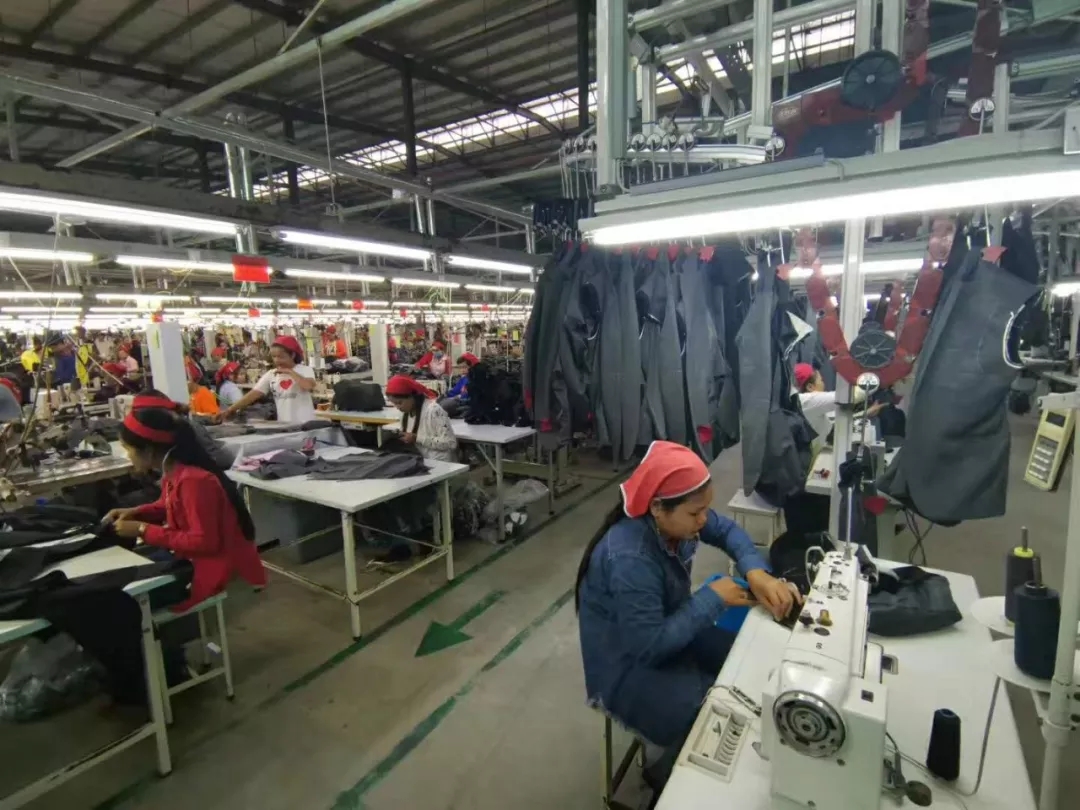
First to go out of the enterprise has been successful, so that many domestic textile enterprises also jumped to try, but domestic enterprises often lack of overseas investment experience, to a certain extent increased the risk of overseas layout. Singapore Sembcorp Group is a multinational enterprise held by the international famous company Temasek, which has established industrial parks in many ASEAN countries, and its perfect infrastructure and one-stop nanny-type customer service have left a deep impression and praise to the resident and research enterprises.
Recently, Mr. Shen Huimin, Vice President of Sembcorp Group, attended the "One Belt, One Road" Investment Promotion Conference jointly organized by the International Trade Office of China Textile Industry Federation, China Textile International Capacity Cooperation Enterprise Alliance and China Council for the Promotion of International Trade Textile Industry Sub-Council in Shanghai, introducing the business of Sembcorp Group to Chinese textile and garment enterprises. The seminar introduced the business of Sembcorp Group, its industrial parks in Vietnam and Indonesia, and the investment characteristics of the textile and garment industry in both countries.
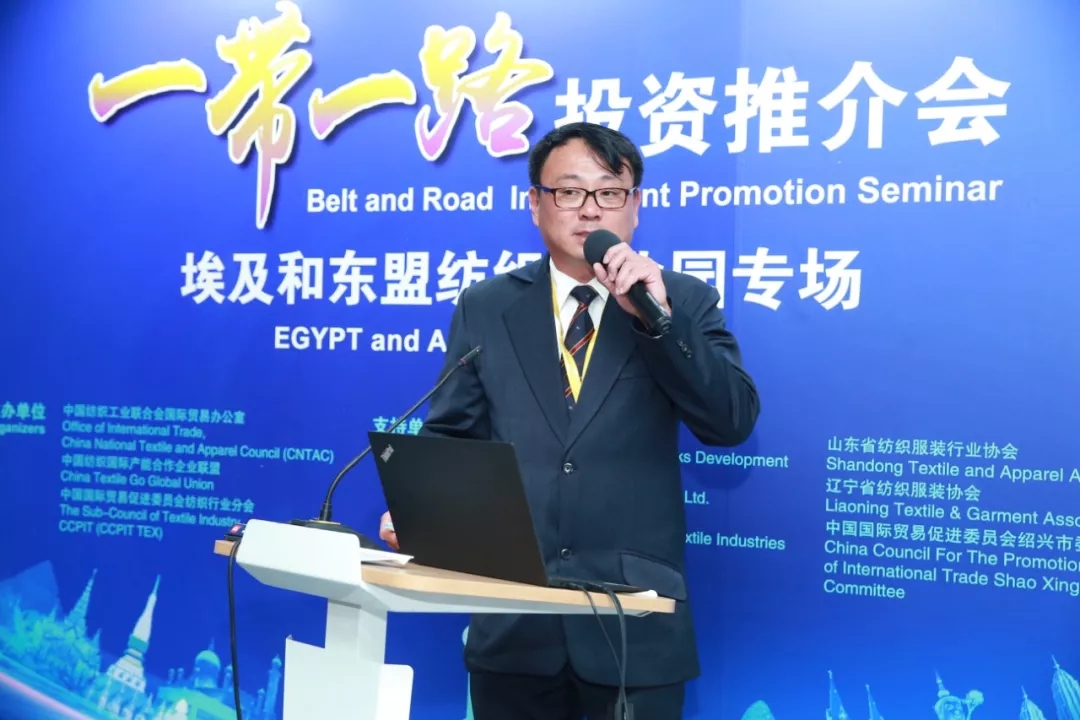
Factors to consider for overseas investment
"There are many issues that need to be considered to determine an overseas investment site and choose an industrial park." Shen Huimin introduced that from the inside, it needs to consider infrastructure construction, including water, electricity, steam, drainage, communication, etc., as well as technology, talents, information, capital, market, regulations, labor, customs, logistics and other supporting services. From the periphery, it is also necessary to consider establishing a good relationship with the local government. These factors determine whether it can be put into production quickly, operate stably and have a good production environment.
Enterprise overseas investment needs the help of a strong industrial park manager. Sembcorp Group has rich experience in industrial park operation and it operates many industrial park projects in China and Southeast Asia. Hong Kong Yida, Jiangsu Dongdu and other well-known textile enterprises have entered Vietnam through Sembcorp.
According to Shen Huimin, Sembcorp Group is held by Temasek, which is supervised by Singapore's Ministry of Finance, so Sembcorp Group also has a layer of government background and the projects it operates are supported by the government.
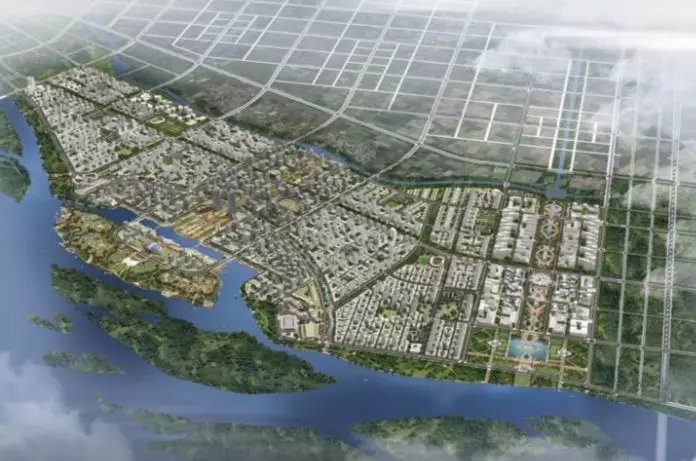
Sembcorp is engaged in the energy, water, marine and township development business, which includes the development, operation and management of integrated township projects such as industrial parks, offices, commercial and residential. Benefiting from China's reform and opening up, Sembcorp has operated projects in China such as Suzhou Industrial Park, Nanjing Eco-Tech Island and Sichuan Innovation and Technology Park with great success. Sembcorp has also worked on numerous projects in Vietnam, Indonesia and India. With the support of the government, Sembcorp will also establish an industrial park in Myanmar in 2020.

Vietnam has free trade agreements with many countries
Many domestic textile enterprises have set their investment eyes on Vietnam. In Shen Huimin's view, the advantages of Vietnam investment are stable political and social environment, strong economic growth, hard-working and cheap young labor force, expansion of domestic consumer market, and free trade between Vietnam and many countries.
According to the data, Vietnam's population is nearly 100 million, ranking 14th in the world, with 65 million working people under the age of 43, making it one of the countries with the largest labor force in Southeast Asia and a prime demographic structure. With the influx of overseas funds into Vietnam, it has directly driven the employment rate, the property market, plants, department stores, construction climax, ramming the Vietnamese government's fiscal revenue, and also driven the high growth of Vietnam's economy, with a GDP growth rate of 7.1% in 2018 . In addition, the low labor and manufacturing costs are undoubtedly a major advantage that Vietnam possesses. In recent years, the average monthly salary of its production workers is only 40% of that of our workers, despite the fact that labor costs have risen at an annual growth rate of 11%.
So far, Vietnam has signed 16 free trade agreements (FTA) with other countries, especially with developed countries such as the European Union, Japan and South Korea, etc. The Vietnam-EU Free Trade Agreement (EVFTA) signed between Vietnam and the European Union will come into force soon. According to the agreement, the EU will exempt 85.6% of tariff goods from Vietnam to the EU and increase the abolition rate to 99% during the following 7 years. This will give a strong impetus to Vietnam's exports, especially for footwear and apparel products.

Vietnam is also a country of the Comprehensive Progress Agreement for Trans-Pacific Partnership (CPTPP), which has entered into force. The agreement will help promote Vietnam's exports to markets in Asia, America and Oceania, especially Japan, Australia and Canada.
Currently, Sembcorp has 7 projects in Vietnam strategically located in the southern, central and northern economic zones. Among them, the industrial parks in Hai Phong, Quang Ngai and Nghe An have special preferences in terms of taxation, with enterprises enjoying a business income tax rate of 10% for 15 years from the year of production and operation. Enterprises located in Quang Ngai Industrial Park are exempted from paying customs duty for 5 years when importing raw materials and semi-finished products that cannot be satisfied by the local market. In addition, the cost of water and electricity is also very low, which is especially suitable for textile enterprises to invest. In addition, the Vietnamese government has strict management of wastewater discharge for printing and dyeing enterprises, and only those enterprises that have obtained a permit are eligible to discharge. And the park managed by Sembcorp can provide enterprises with wastewater discharge permits and provide a full range of services such as import and export and technical schools. Shen Huimin suggests that it is the best choice for textile enterprises to locate in Quang Ngai Industrial Park.

Low labor costs in Indonesia
Sembcorp also operates several industrial parks in Indonesia, including the Kendra Industrial Park in Semarang, Central Java, Indonesia, which is a joint venture between two of the world's leading developers, PTJababeka Group and Sembcorp. The total land area of this large-scale integrated industrial park is approximately 2,700 hectares. As an integrated industrial park of international standard, Kendra Industrial Park provides quality industrial, residential and business land for local and foreign investors interested in expanding in Indonesia to meet the increasing demand for low operating costs.
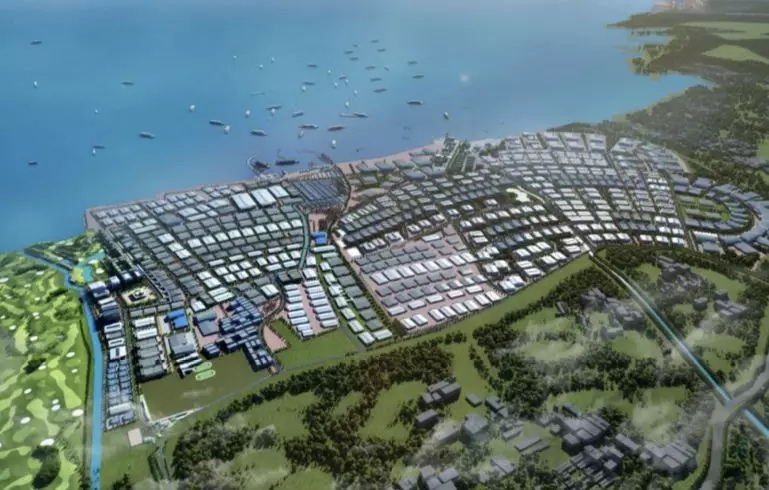
Kendall Industrial Park
Shen Huimin said that the price of land in Indonesia is higher than Vietnam, but the labor cost in Central Java province is lower than Vietnam. He believes that with competitive land price, abundant skilled labor resources and perfect infrastructure, Kendall Industrial Park is suitable for textile companies to invest.
"Textile enterprises stationed in the industrial park can concentrate on their own business, and leave all other problems to us." Shen Huimin reassures domestic textile enterprises that Sembcorp will provide valuable services.






